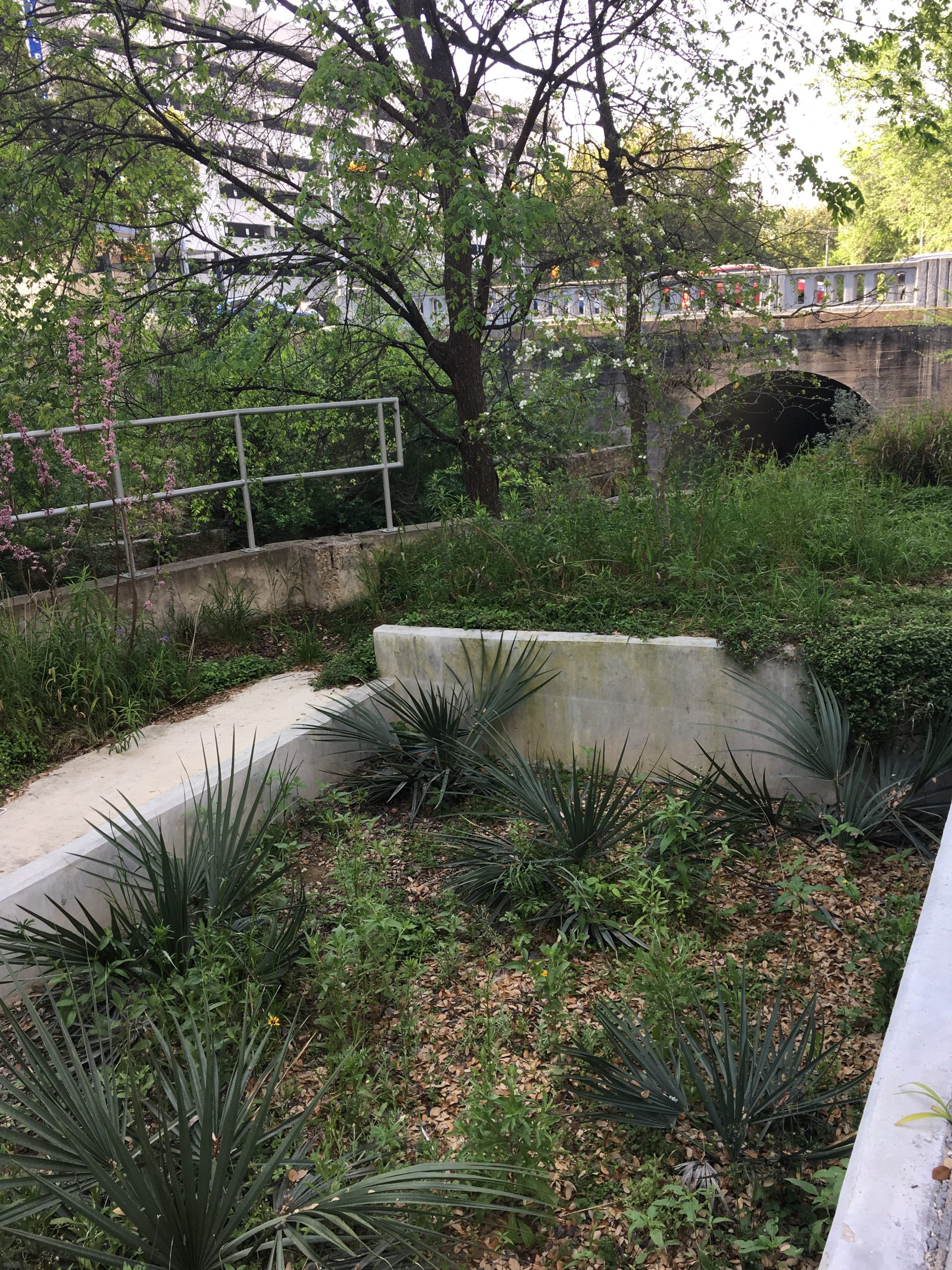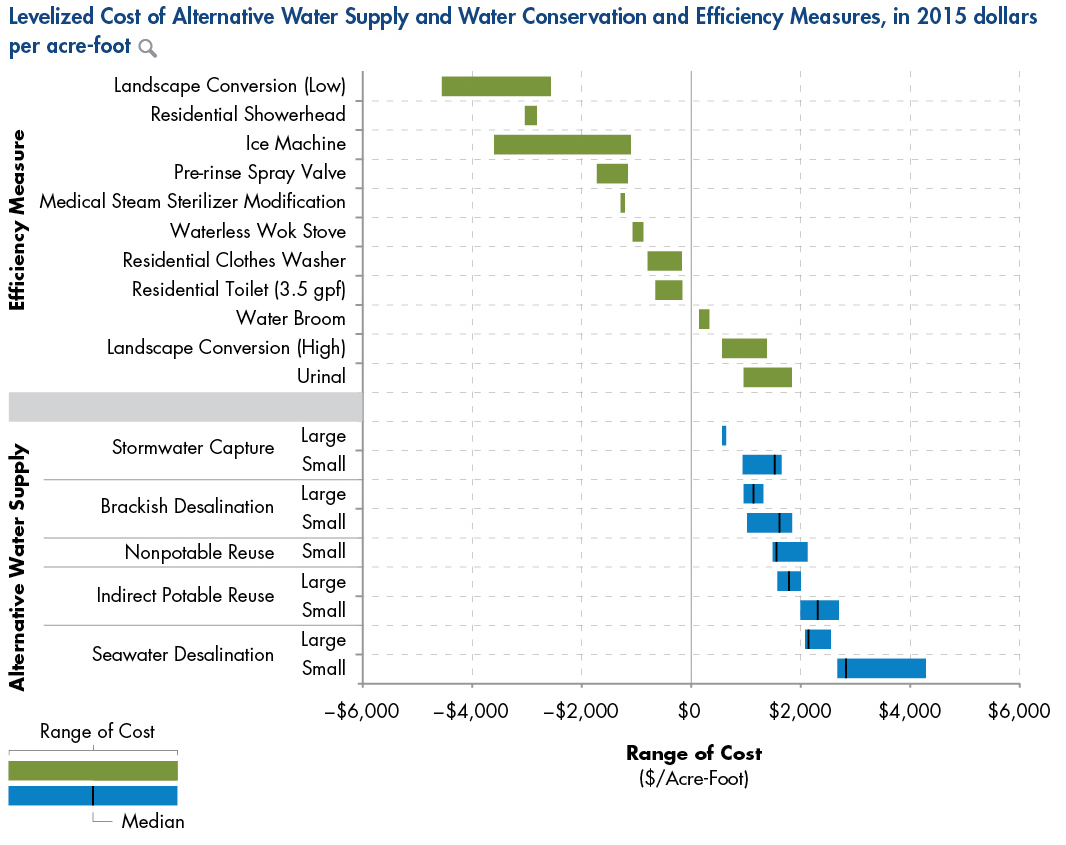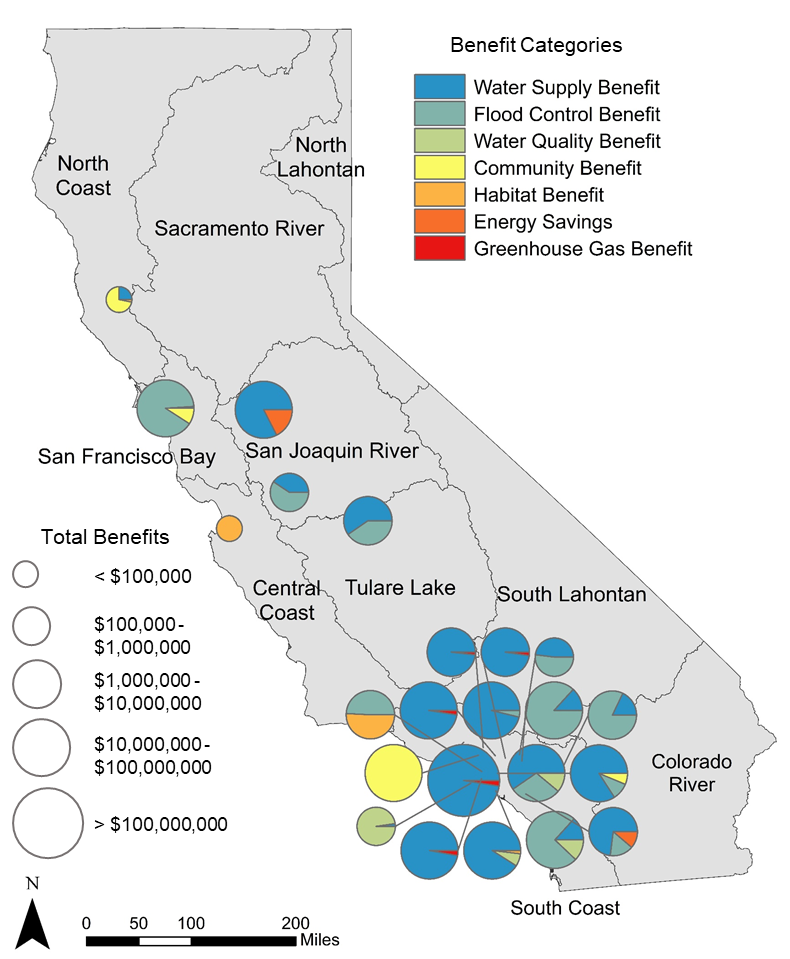By Sarah Diringer
The rain barrels at my house are full – 110 gallons of rain stored to water the garden when we enter the dry season. And, this is only a small fraction of the stormwater being stored throughout California and the western U.S. Across the region, communities, water agencies, and others are catching millions of gallons of stormwater to store for the drier months.

Stormwater is the rain and other water that runs off of streets and sidewalks into nearby gutters or waterways. Communities throughout the western U.S. are expanding efforts to collect this valuable water resource. These projects range from capturing water from a single rooftop or driveway to developing large infiltration basins that recharge billions of gallons of water each year in groundwater basins.
In addition to providing additional water supply, many stormwater capture projects provide “multiple benefits,” such as managing floods or restoring ecosystems. When these co-benefits are considered, then stormwater capture looks even more valuable.
The Pacific Institute recently published two open-access articles that examine stormwater capture projects in California to better understand how much these projects cost, as well as what kinds of benefits they provide: “Economic evaluation of stormwater capture and its multiple benefits in California” and “The cost of alternative urban water supply and efficiency options in California.” These articles focus on data from California, but the learnings are applicable far beyond the state.
Stormwater Capture is Economically Feasible
Stormwater capture is a cost-effective option for supplying water to communities, especially when compared to other traditional water supplies. Based on our research, stormwater capture has a median cost between $0.48 and $1.23 per m3 of water, compared to wastewater reuse, which has a median cost of $1.25 per m3 of water, or seawater desalination, which has a median cost between $1.72 and $2.29 per m3 of water.

Economic Analyses Can Incorporate More Benefits
Stormwater capture can provide communities with additional benefits that aren’t commonly considered in economic analyses. These include flood control, restored habitat, energy savings, and recreational opportunities. But these additional benefits are not always included in economic analyses, and this means stormwater capture is an underappreciated option for water supply.
In a study of 26 urban stormwater capture projects in California, the median cost-benefit of projects decreased by more than 85% when incorporating at least one additional benefit, reducing the median costs from $0.84 per m3 to $0.12 m3 of water. For some projects, the additional benefits far outweighed the cost of the project.

Incorporating Multiple Benefits Can Help Develop Partnerships and New Funding
Including co-benefits of projects can help with more than just improving the economic outlook. Multiple benefits can help water managers develop partnerships among agencies and encourage additional funding. For example, our research found that of stormwater projects we examined, one in three provided more benefit to a secondary goal than the primary reason for building the project. While stormwater is notoriously underfunded, we can help increase public and private investments by building partnerships and capitalizing on the multiple benefits.
What You Can Do
While these reports focused on stormwater capture in California, this resource can serve as an important alternative supply throughout the world.
Learn About It: If you’re interested in learning more about stormwater capture and seeing these projects in your own community, reach out to your local water or flood control agency to learn more about efforts to sustainably manage stormwater in your own community.
Install It: If you’re interested in installing green infrastructure in your own yard, find out if an agency in your region will provide a rebate for converting your landscape or installing green infrastructure. These might be provided by your water agency, municipality, or other regional entity.
Incorporate It: If you’re a water manager interested in incorporating multiple benefits into water management decisions, explore the Pacific Institute’s multi-benefit approach to water management and consider how to understanding the full costs and benefits can help with your decision making.
Scale It: And finally, if you want to see sustainable stormwater capture expand in cities throughout the world, encourage your local agencies to consider innovative, stormwater management projects that can provide multiple benefits, including improving water quality, increasing urban green space, and recharging groundwater basins.


